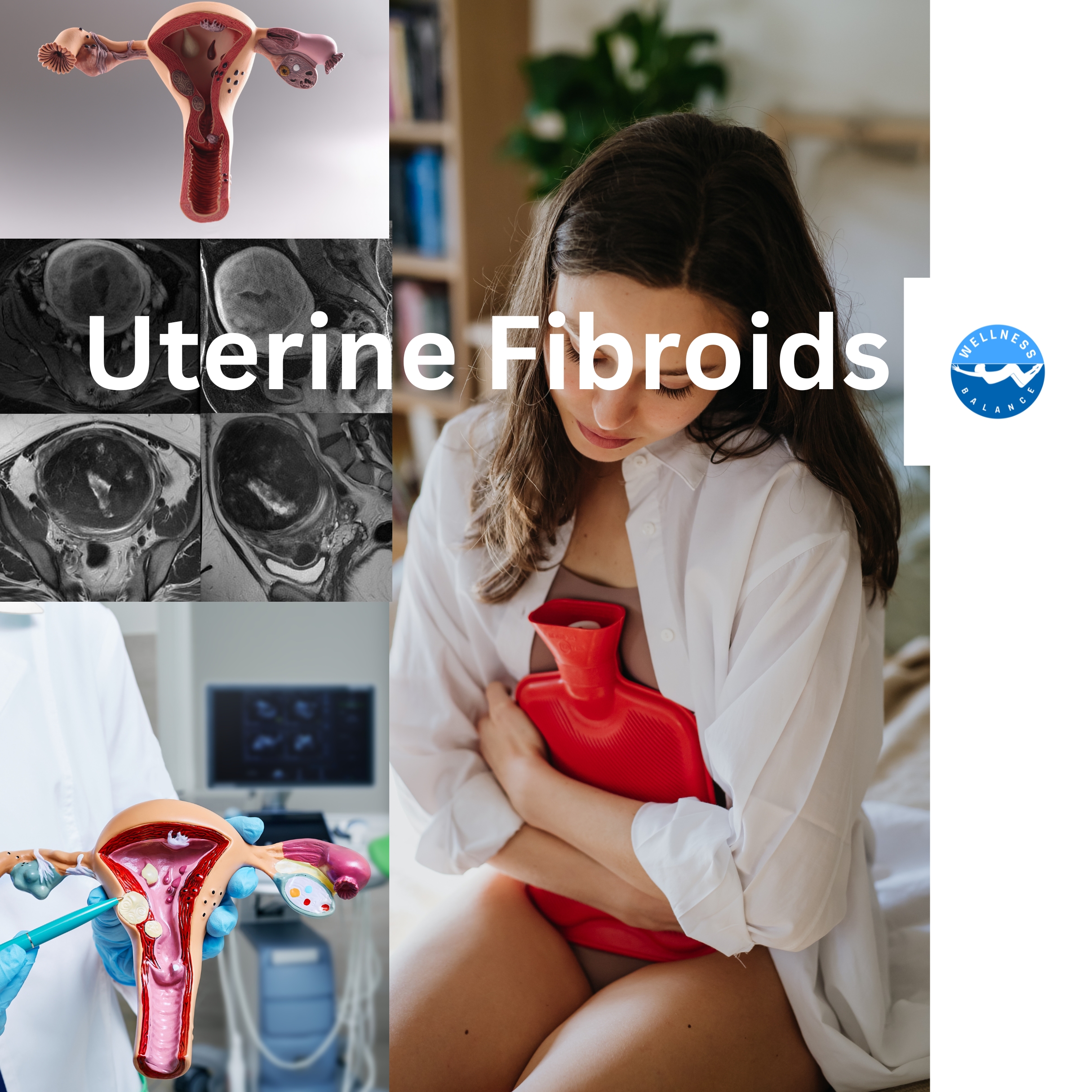Today, let’s discuss everything you need to know about uterine fibroids and explore holistic treatments like acupuncture, ovarian activation massage, and Chinese herbal medicine.
1. Can Uterine Fibroids Turn Cancerous?
Although the words “tumour” and “cancer” might look similar, they are fundamentally different. Uterine fibroids are benign tumours formed from the overgrowth of uterine smooth muscle tissue, making them the most common benign tumour in women.
They vary in size, from as small as a pea to large enough to occupy the entire abdominal cavity. Depending on their location and growth pattern in the uterus, they can be classified as submucosal fibroids (between the endometrium and myometrium), intramural fibroids (within the uterine muscle), or subserosal fibroids (on the outer wall of the uterus).
Fibroids are most common in women aged 30-50 and rare in those under 20. They typically shrink after menopause.
2. What Causes Uterine Fibroids?
The development of uterine fibroids is linked to multiple factors, including hormonal changes, genetics, and other potential factors. Changes in hormone levels, especially oestrogen and progesterone, play a crucial role in the occurrence of fibroids. Genetic factors also contribute to their development. Additionally, obesity, diet, and environmental factors may increase the risk of fibroids.
From the perspective of traditional Chinese medicine (TCM), the formation of fibroids often begins with liver qi stagnation, leading to blood stasis and spleen deficiency. Subsequently, spleen deficiency produces phlegm and dampness. Finally, the combination of phlegm, dampness, and qi stagnation leads to the formation of fibroids.
3. Do Uterine Fibroids Cause Problems?
- Location: The symptoms of fibroids are closely related to their location. Small fibroids in the myometrium or subserosa are less likely to cause problems. However, even a 1cm fibroid in the uterine cavity can cause heavy menstrual bleeding and anaemia.
- Size: Clinically, a 5cm diameter is a significant threshold. Larger fibroids are more likely to cause degeneration and symptoms like urinary frequency or constipation due to pressure on the bladder or rectum.
- Echo Patterns: On ultrasound or MRI, fibroids usually appear as homogeneous low-echo masses. If the echo pattern becomes cystic, irregular, or disorganized, it may indicate degeneration and require further investigation.
4. Do Uterine Fibroids Affect Pregnancy?
If intramural fibroids do not protrude into the uterine cavity, they generally do not significantly affect pregnancy, though regular check-ups are essential. Larger intramural fibroids, protruding into the uterine cavity, or submucosal fibroids can impact pregnancy, possibly causing infertility or miscarriage.
5. Can I Drink Soya Milk or Eat Chicken If I Have Uterine Fibroids?
Soya milk contains phytoestrogens, mainly isoflavones, which resemble oestrogen but have a much weaker effect. If your body’s oestrogen levels are adequate, phytoestrogens won’t have much impact. If oestrogen levels are low, phytoestrogens might have a slight effect, but it’s not enough to stimulate fibroid growth. Foods like chicken, seafood, and honey contain negligible hormones and won’t promote fibroid growth.
6. Can Medication Shrink Uterine Fibroids?
Most medications for treating fibroids work by inhibiting oestrogen and progesterone levels, which can temporarily control fibroid growth. However, fibroids often regrow once medication is stopped due to continuous hormone production in premenopausal women. Different drugs have various side effects, making long-term use impractical. Beware of “miracle cures” advertised for fibroids, as they are unreliable. Postmenopausal fibroids usually shrink due to decreased hormone levels. If they grow after menopause, seek medical advice promptly.
7. Why Do Fibroids Recur After Surgery?
Fibroids are more likely to recur in patients over 40 or those who experienced early menarche due to higher hormone levels. Multiple fibroids increase the risk of recurrence, as smaller, undetected fibroids may continue to grow post-surgery.
8. How Should Uterine Fibroids Be Treated?
- Medication: The aim is to relieve symptoms, reduce fibroid size, or slow growth by regulating hormone levels. Medication is often used alongside surgery or other treatments and requires regular monitoring for side effects.
- Surgery: Depending on the patient’s condition and desires, different surgical options are available:
- Myomectomy: Preserves the uterus and is suitable for those wanting to maintain fertility.
- Hysterectomy: Completely removes the uterus and fibroids, eliminating recurrence risks for those with no fertility plans or severe symptoms.
- Uterine Artery Embolization: A minimally invasive procedure that blocks blood supply to the fibroids, causing them to shrink. Ideal for multiple fibroids, inaccessible fibroids, or those unsuitable for surgical removal.
- Holistic Treatments: As a licensed acupuncturist and expert in Chinese medicine, I often recommend integrating acupuncture, ovarian activation massage, and Chinese herbal medicine at early stage before the fibroids get better. These treatments can help balance hormones, reduce stress, and promote overall uterine health. Acupuncture and ovarian activation massage offer a natural way to regulate hormonal imbalances and support the body’s healing processes. Chinese herbal medicine is particularly effective in improving blood flow and reducing inflammation, which can support fibroid management.
9. How to Maintain Uterine Health?
- Regular Check-ups: Routine gynaecological exams help monitor any changes and address issues promptly, especially for women over 35.
- Balanced Diet: Increase intake of vegetables, fruits, and whole grains to provide fibre, vitamins, minerals, and antioxidants. Limit red meat and processed foods.
- Healthy Weight: Maintain a balanced diet, regular exercise, and adequate sleep to manage weight.
- Stress Management: Practice stress-relief techniques like exercise, meditation, and relaxation to balance hormones and improve overall health.
Uterine fibroids are manageable with proper care. Understanding your condition and taking appropriate actions is the best approach to managing fibroids. Integrating holistic treatments like acupuncture, ovarian activation massage, and Chinese herbal medicine can provide additional support and improve your overall well-being.
Take the Next Step in Your Wellness Journey at wellness balance
If you’re concerned about uterine fibroids or looking for natural ways to support your reproductive health, consider holistic treatments. Contact Suzie Chen at Wellness Balance for a consultation and discover how our expert therapies can help you on your journey to achieving optimal reproductive health. Visit our website or whatsapp/call us at 02071013489 to book your appointment now.




0 Comments